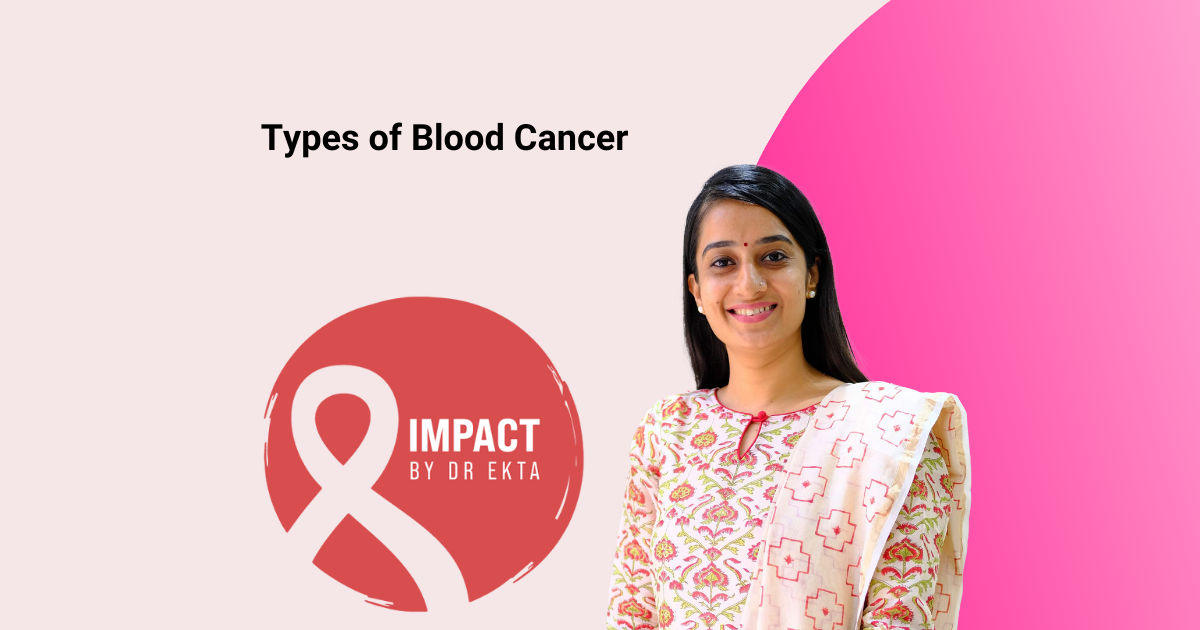As an oncologist, I have dedicated my career to understanding and treating blood cancers. My name is Dr. Ekta Vala, and over the years, I have seen firsthand the complexities and challenges that patients with blood cancers face. Blood cancer, unlike other forms of cancer, affects the very components of our blood, disrupting normal blood cell production and function. In this blog, I will delve into the various types of blood cancer, shedding light on their characteristics, symptoms, and treatment options. By understanding the different types of blood cancer, we can better appreciate the nuances of this disease and the importance of early detection and advanced treatment.
Introduction to Blood Cancer
Blood cancer is a broad term encompassing various malignancies that affect the blood, bone marrow, and lymphatic system. These cancers interfere with the production and function of blood cells, which can lead to a range of health issues. The main types of blood cancer are leukemia, lymphoma, and myeloma. Each type has its subtypes and unique characteristics, making the diagnosis and treatment complex and specialized.
Types of Blood Cancer
1. Leukemia
Leukemia is a cancer of the bone marrow and blood, characterized by the overproduction of abnormal white blood cells. It can be classified into several subtypes based on the speed of progression (acute or chronic) and the type of blood cell affected (lymphocytic or myeloid).
- Acute Lymphocytic Leukemia (ALL):
- Description: A rapidly progressing cancer that affects lymphoid cells.
- Symptoms: Fatigue, fever, frequent infections, and easy bruising or bleeding.
- Treatment: Chemotherapy, targeted therapy, and sometimes stem cell transplantation.
- Acute Myeloid Leukemia (AML):
- Description: A fast-growing cancer that affects myeloid cells.
- Symptoms: Similar to ALL, with additional symptoms like bone pain and swollen lymph nodes.
- Treatment: Intensive chemotherapy, targeted therapy, and stem cell transplantation.
- Chronic Lymphocytic Leukemia (CLL):
- Description: A slow-progressing cancer that affects lymphoid cells.
- Symptoms: Often asymptomatic in early stages; later symptoms include swollen lymph nodes and fatigue.
- Treatment: Observation for early stages, chemotherapy, immunotherapy, and targeted therapy.
- Chronic Myeloid Leukemia (CML):
- Description: A slowly progressing cancer that affects myeloid cells.
- Symptoms: Fatigue, weight loss, night sweats, and an enlarged spleen.
- Treatment: Targeted therapy with tyrosine kinase inhibitors, chemotherapy, and sometimes stem cell transplantation.
2. Lymphoma
Lymphoma is a type of blood cancer that originates in the lymphatic system, specifically in the lymphocytes. There are two main types of lymphoma: Hodgkin lymphoma and non-Hodgkin lymphoma.
- Hodgkin Lymphoma (HL):
- Description: Characterized by the presence of Reed-Sternberg cells.
- Symptoms: Painless swelling of lymph nodes, fever, night sweats, and weight loss.
- Treatment: Chemotherapy, radiation therapy, and sometimes stem cell transplantation.
- Non-Hodgkin Lymphoma (NHL):
- Description: A diverse group of blood cancers that includes many subtypes.
- Symptoms: Similar to HL but varies depending on the specific subtype.
- Treatment: Chemotherapy, immunotherapy, targeted therapy, radiation therapy, and stem cell transplantation.
3. Myeloma
Myeloma, also known as multiple myeloma, is a cancer of the plasma cells in the bone marrow. It disrupts the normal production of antibodies, leading to weakened immune function and other complications.
- Description: Cancer that involves malignant plasma cells.
- Symptoms: Bone pain, frequent infections, anemia, kidney problems, and high calcium levels.
- Treatment: Chemotherapy, targeted therapy, immunotherapy, and stem cell transplantation.
Diagnosis of Blood Cancer
Diagnosing blood cancer involves several tests and procedures to determine the type and extent of the disease. Common diagnostic methods include:
- Blood Tests: Complete blood count (CBC) and other blood tests to detect abnormalities in blood cells.
- Bone Marrow Biopsy: Extraction and examination of bone marrow to identify cancerous cells.
- Imaging Tests: CT scans, PET scans, and X-rays to detect the spread of cancer.
- Genetic Testing: Identifying specific genetic mutations associated with certain blood cancers.
Treatment Options for Blood Cancer
Treatment for blood cancer varies based on the type, stage, and specific characteristics of the disease. The main treatment modalities include:
- Chemotherapy: The use of drugs to kill or slow the growth of cancer cells.
- Radiation Therapy: The use of high-energy radiation to target and destroy cancer cells.
- Immunotherapy: Treatments that boost the body’s immune system to fight cancer.
- Targeted Therapy: Drugs designed to target specific genetic mutations or proteins in cancer cells.
- Stem Cell Transplantation: Replacing damaged bone marrow with healthy stem cells.
- Supportive Care: Managing symptoms and improving the quality of life through palliative care.
Conclusion
Understanding the types of blood cancer is crucial for early detection, accurate diagnosis, and effective treatment. Leukemia, lymphoma, and myeloma each have unique characteristics that require specialized approaches to care. By staying informed and vigilant, we can improve outcomes and offer hope to those affected by this challenging disease.
Whether you or a loved one is facing a diagnosis of blood cancer, know that advances in medical research and treatment are continually improving the prognosis and quality of life for many patients. If you have concerns or symptoms, seek medical advice promptly for the best possible care and support.

